Pointer dog breed is a very energetic breed that has a lean muscular structure that showcases strength and agility.
The pointer is also famously known as the English pointer.
It is a very well behaved dog but not suitable to be a family’s first pet as it is a breed which needs to be tamed by experienced people.
Through hunting and pointing out birds and animals of prey alongside their hunter owners, they made a place into the homes and became a family pet.
These dogs are loyal and devout to their families and have an even temper.
They are good at mingling with dogs and cats as well, making them a perfect pet for a pet-loving family.
Table of Contents
Quick Facts

Avg. Weight: 55-75 lbs (male), 45-65 lbs (female)
Avg. Height: 25-28 inches (male), 23-26 inches (female)
Life Expectancy: 12-17 years
Dog Group: Sporting dog
Colors: Black, liver & white, lemon & white, orange & white, liver, black & white
Rank (America): 113/193
At A Glance

- Size (3/5)
These are medium-sized dogs that can grow up to 28 inches tall.
Their growth depends on the quality of food fed to them since the start and also their genes.
- Affection Level (5/5)
A pointer dog is very well suited for a family kind of atmosphere as it has a very welcoming nature towards kids and people part of the family.
They are also good at getting along with new people and neighbors.
They are very loving and playful and constantly need someone to keep them busy in activities and games.
- Apartment Friendly (1/5)
No, this dog doesn’t do well living in confined spaces.
It needs a spacious house, and an attached yard can do the best job of keeping it satisfied.
It is a very energetic dog that needs constant participation in activities or exercise or play.
If the energy is not spent well, it can take your house for a yard and be damaging to the apartment.
- Cold Weather Tolerability (2/5)
It has a slim coat and low-fat content in the body, which makes it pretty much vulnerable to cold.
It can be taken out for a walk in winters for 20 min after putting up a warm coat or sweater on it.
Best time to take it out for a walk in the day time when the sun is at its peak.
It is not meant for snowy regions.
- Hot Weather Tolerability (4/5)
Pointer dog does well in terms of tolerating heat because of its thin fur coat.
It just needs to stay hydrated as its enormous inclination towards staying physically active can make it drain away from the water from its body in summers.
Best time for it to go out and play is either early in the morning or late in the evening.
- Barking Tendencies (3/4)
Pointers are not aggressive canines and so they don’t bark excessively at strangers or other dogs.
They bark when being protective of their owner or also it can be a friend or a welcoming bark.
They are very energetic and so their energy must be drained by involving them in activities.
Not indulging in activities can make them anxious, which can make them bark more than normal indoors.
- Cat-Friendly (4/5)
This breed has a great temperament. It gets along with house cats well.
Though outside cats can make it instinctive, its non-timid nature can help the owner to keep it under control.
It should be given the space and environment to socialize since puppyhood or else it can grow up to be reserved.
- Dog-Friendly (5/5)
It is very friendly towards other dogs.
Pointers are one among the breeds of dogs that get along with other dogs very well.
They are playful towards other dogs and it is rare to find a pointer not mingling with other pooches.
- Exercise Needs (5/5)
It is a very energetic and active dog and has endless stamina for playing or exercising.
Its need for being physical is more than that of an average dog and so the family looking forward to adopting this breed should be willing to give it time outdoors.
Playing games like fetch can do well in expending its energy and keeping it calm indoors.
Less playing or activities can make them destructive and ill-behaved indoors.
- Grooming Needs (5/5)
There are many types of pointer dogs, some have more grooming needs than others depending on the kind of fur they have.
But among other pointer types, the English pointer has low grooming needs as for its small fur coat is rugged and doesn’t catch dirt.
It sheds throughout the year (mildly) so consistent grooming can help in keeping the house clean along with the dog.
- Playfulness (5/5)
These dogs are very playful due to their nature and get along well with kids.
Having them in the house can be a very joyful experience.
You should also provide the pooch with toys to keep busy when no one has the time to have a play with it.
- Trainability (5/5)
It is a fairly intelligent breed and fairly quick in grasping commands and intentions of its owner.
These dogs are a little sensitive so be sure to use positive action towards it so as to train it and not scare it down.
Have patience in training your pointer and it will learn well.
These dogs need an experienced owner who can play the role of alpha.
- Intelligence (5/5)
Pointers are intelligent but if they are not indulged in activities that exercise their brain or keep their wits active, they can get dull with time.
- Mouthiness (5/5)
Just like most of the dogs, even this breed is a little mouthy. It is a normal dog behavior to chew, nip or bite in a non-harmful manner.
This can be controlled by giving the dog different chew toys to take out its mouthiness on.
Buy treat-filled chew toys for your dog.
- Price Group (3/5)
Pointer dog price can cost from $1000 – $1250 making it count in the averagely costly dogs in the U.S.
About English Pointers
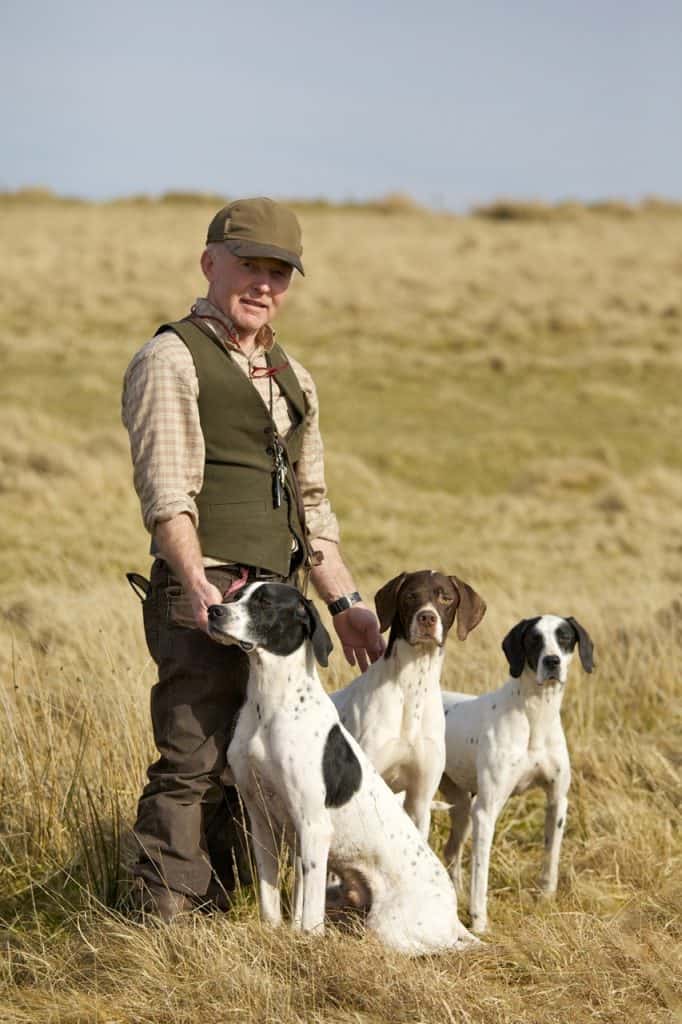
Pointers are fine dogs that are medium-sized and have a great temperament.
They behave well with kids and neighbors and are perfect for an active family.
Pointers are easy to discern by their pointed tail, long head, and muscular frame.
They can hear the prey in the distance and spot it to the hunter by pointing their tail and standing with one leg lifted from the ground.
They socialize well with other pets especially when raised together.
Pet bird owners should look out for their birds as this breed has a keen interest in going behind them.
This breed is not for you if it is your first time handling a pet.
It has a lot of energy and so it needs an active owner.
It is fairly intelligent and has a mind of its own and so it should be trained and needs a controlling owner who can play the alpha.
Its grooming needs are also less due to its short coat.
It sheds moderately throughout the year and so regular grooming can keep both the dog and your house clean.
It is a very loyal and devout breed which can assume the stance of a guard when it senses any danger to its family.
Where Did Pointers Come From?
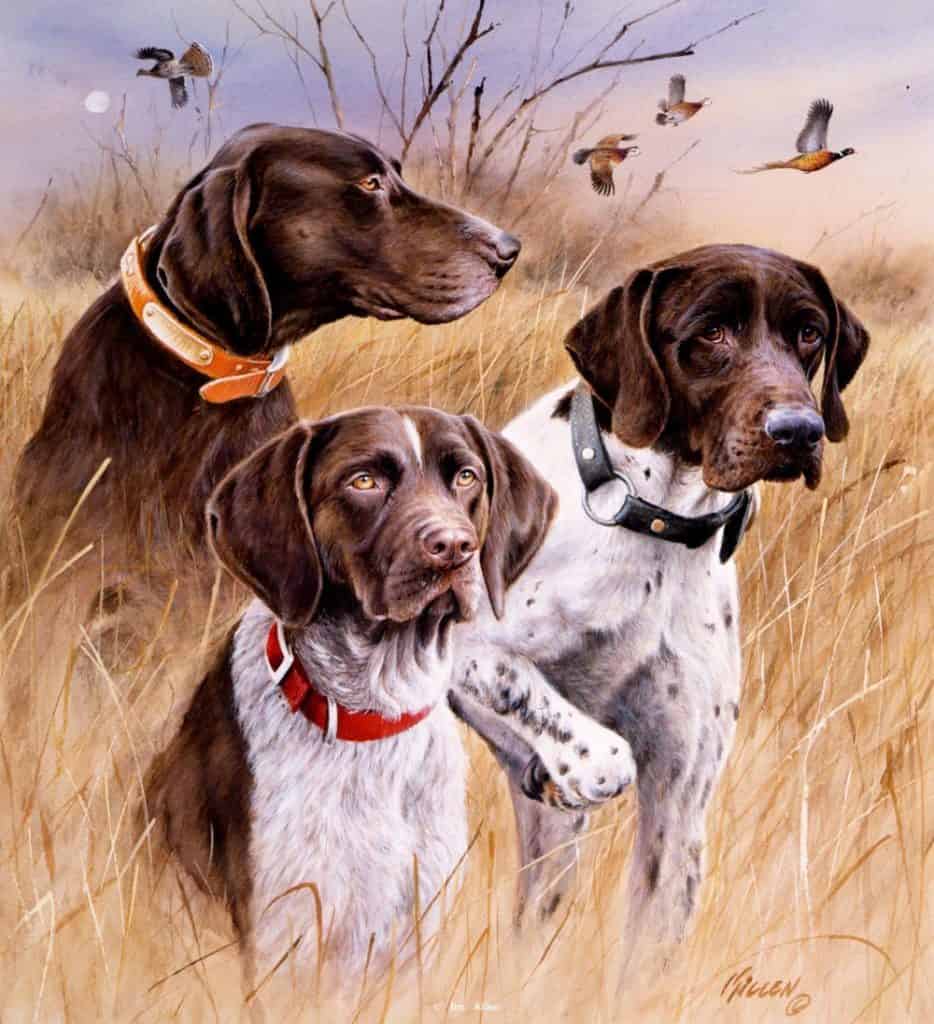
The origin of this breed like most of the breeds of dogs is pretty vague.
It is said to have originated from Spain and existed in England since 1700s, brought there by the English officer from the Netherlands, which was then under Spanish control.
The name ‘pointer’ before being given to this breed was a term used to denote the dogs that used to help the hunters by pointing out the birds or animals of prey.
As this breed started getting commonly used in hunting or coursing where this breed was used to point out the prey (and greyhounds were used to hunt the prey down) this breed grew in popularity and was started to be known as “the pointer”.
It made its way to America by the colonists after being perfected in England itself.
The breed was larger and slower than the ones we see today and was perfected by mixing foxhound, greyhound, and bloodhound with the original.
It made into American households of the hunters and from there its loving nature and good temperament came to be known, making it a common house breed.
FACT-ILICIOUS: “Even before the invention of guns, Pointers were used for hunting birds. The dog would be sent out to locate prey, and then the hunter would throw a net over the dog and any birds it had found, as a way of catching them.”
Size
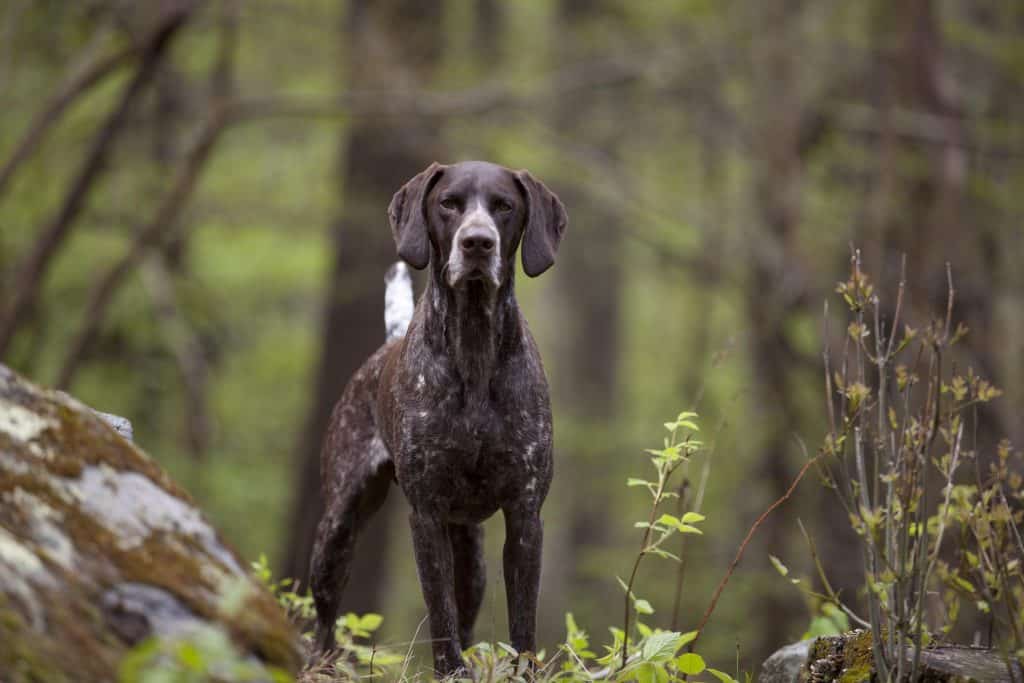
The pointer is a medium-sized dog that can grow from 23 to 28 inches tall and 45 to 75 lbs in weight depending on gender, genes, exercise and quality of food fed.
Although medium-sized, it can be a disturbing element in the house due to its activeness.
Good amount of exercise and participation in training keeps it calm inside the house.
Trainability

Pointers need an experienced owner who can take the stance of alpha and lead these pooches.
It can be hard for the ones who don’t know the behavioral patterns of dogs to keep a pointer as it needs understanding.
Pointers are intelligent and this makes them easy to train but also they are a little stubborn and need patience in learning some things.
Always use positive ways of training this dog as hitting it often or using any kind of hard action can make it reserved and scared.
The training part only gets difficult because these dogs have a tendency to get distracted easily.
Pointer dog puppies should be given the basic training and only advance to more complex trainings when above 3 or 4 months old.
Grooming
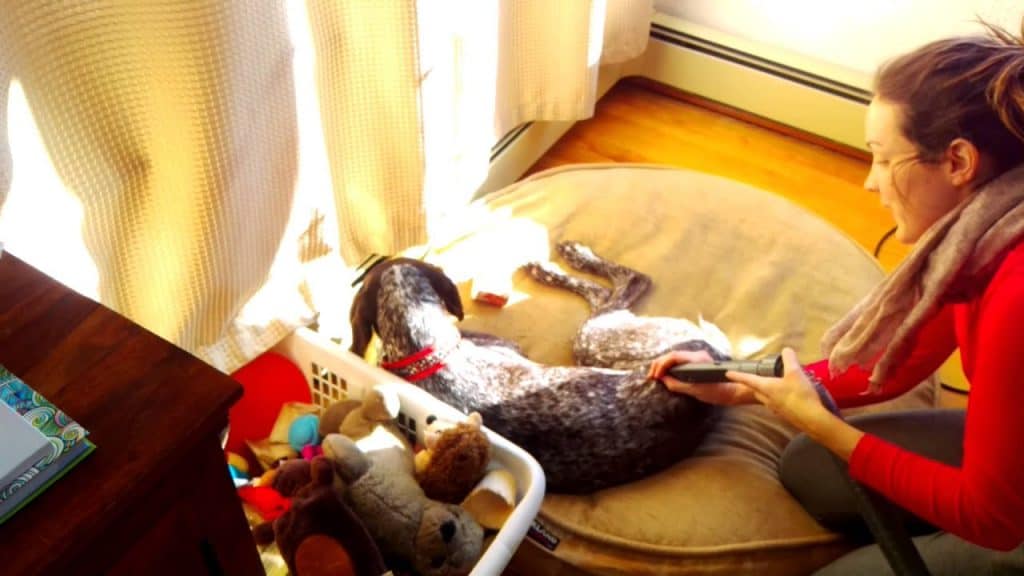
Due to its short coat, it needs brushing once every week to pluck out all the loose hair and keep it fine-looking.
Pointers shed throughout the year in a minimal manner and so brushing them regularly can help in keeping the house clean.
Keeping the coat brushed also helps in spreading the natural oils throughout the fur which in turn makes the fur healthy.
Giving a bath once every 15 to 20 days is good enough.
Bathing more often can strip off the natural oils from its fur, making it dry.
Its grooming needs increase at the time of changing the weather, especially spring, as at this time it starts shedding heavily.
Feeding

The pointers are highly active dogs, so they need to be fed 4 to 5 times a day.
You can feed your canine with the healthy and known commercial dog food which is nutritional and suitable for your dog.
You should also feed your dog natural food, especially the diet given to the pointers of the 1700s that is brown rice, chicken neck, raw eggs, vegetables, fruits, yogurt, and pasta.
Do not make them indulge in eating more than required as it can make it overweight and lethargic in nature.
Treats count under junk and so should be given to them in a limit.
But, treats should be given to any pet as it gives your dog a break from the flavor of the regular food.
| What Should Be Fed | What Should Not Be Fed |
| Potatoes | Onion |
| Broccoli | Grapes |
| Beef | Caffeine |
| Chicken | Chocolates |
| Turkey | Salty food |
| Eggs | Alcohol |
| Rice | Avocado |
To know more about what not to feed your dog, go and check out the 46 toxic foods for dogs that you might not be aware of.
Suggested: Senior Dog Food
Common Diseases
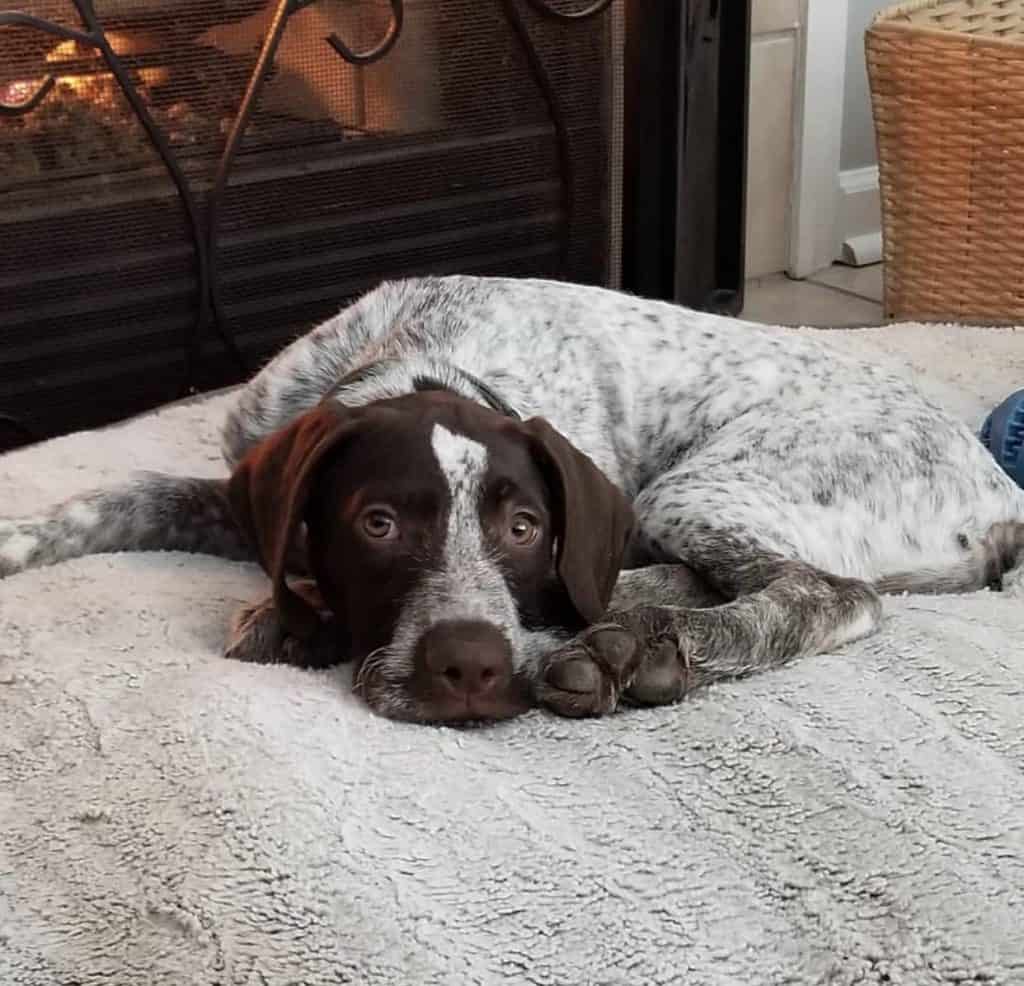
Targeting The Bones
- Hip and Elbow Dysplasia:
It is an inherited disease which causes improper development of the hip and shoulder joints which in turn causes arthritis.
This condition should be analyzed early and be looked after to minimize the damage or pain.
In severe conditions, it is better to go for surgery to cure arthritis.
The condition can be determined by taking the x-ray of the bones and joints of the hip and shoulders.
This condition also develops in dogs that are overweight or obese and so always try to maintain your dog’s weight.
Targeting The Skin
- Malassezia Dermatitis:
Pointers are prone to a lot of skin diseases, one of them is the Malassezia dermatitis caused by a particular yeast.
It infects the ears, causing itching and a brown greasy waxy discharge.
It causes the skin to have hairless patches around the neck and which are greasy and have an odor.
Using the medicinal shampoos and soaps when bathing the dog can help.
If that doesn’t help, get your dog to a vet and checked.
- Seborrhea:
It is pretty similar to Malassezia dermatitis and causes dryness in the skin.
The skin becomes flaky, oily and greasy and makes the dog itchy and uncomfortable.
Again, this disease can be taken care of by using remedial shampoos and soaps.
In extreme cases, go get your dog checked by the vet.
- Mange:
It is a very common disease that is found in many dog breeds and also in pointers.
The Demodex mite lives in the hair follicles and stays dormant most of the time.
Many times it attacks the host dog and is stopped by the immune system.
But in dogs like pointers, this mite can grow up in vast numbers and be unstoppable by the dog’s immunity.
It can cause dry, irritating and hairless lesions on the face or the feet.
These may or may not be irritating.
This can also cause secondary skin infections.
Consult a vet to keep the problem under control.
In a few cases, the dogs don’t grow out of it and need lifelong management.
Targeting The Eyes
- Cataract:
It is a common eye disease in old dogs and can take away a pooch’s sight completely.
When it develops you can see the lens of the eye-getting cloudy day by day.
It can be operated and the sight can be restored.
In this condition, the eyelids roll inward and cause the eyelashes to come in contact with the cornea.
As the dog blinks, with time this contact between the cornea and the eyelashes causes depletion of the first layer of the cornea causing irritation and pain.
It can be operated and corrected if looked after early.
It is a heritable disease.
Targeting The Body
- Hypothyroidism:
Hypothyroidism is caused when the immune system of a dog starts attacking the thyroid gland.
This causes the imbalance of hormones in its body.
This affects the metabolism of a dog and can lead to undue weight gain, making the dog overweight or obese.
It can also cause aggression, dry and oily skin coat prone to skin diseases, and fearfulness.
It can be treated by giving supplement pills for hormones.
- Reproductive Issues:
Dogs with large heads and small pelvis like the pointers have a hard time giving birth.
Small pelvis makes it difficult for the dog to pass her puppies placing both the dog and her puppies at risk.
A c-section may be needed to keep both the dog and her puppies healthy.
Vaccination And Care
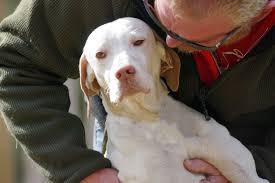
Always monitor your pointer’s behavior because a sudden change in its temperament or attitude can be due to some uneasiness being caused inside its body.
Take it to the vet every 2nd month for a complete health checkup and ask the vet to recommend a diet or any change in the routine.
Meet all of its grooming requirements for every day as it is not a hectic task to do so.
Keep it physically active and play with it to keep it from growing obese.
Make it mingle with the kids, neighbors and dogs and other pets so as to make it grow into a friendly and outgoing pet.
Vaccines against distemper, parvovirus, hepatitis, parainfluenza, leptospirosis, and rabies are an absolute necessity and should not be skipped. Read our Guide To Dog Vaccination to have a thorough idea of vaccines.
Monthly Expense Estimation

Pointer dog price can cost from $1000 – $1250 making it count in the averagely costly dogs in the U.S.
The average cost of owning any dog for the first year is $1300 and $500 each year after that including health checks, food, and facilities.
Behavior With
Children:
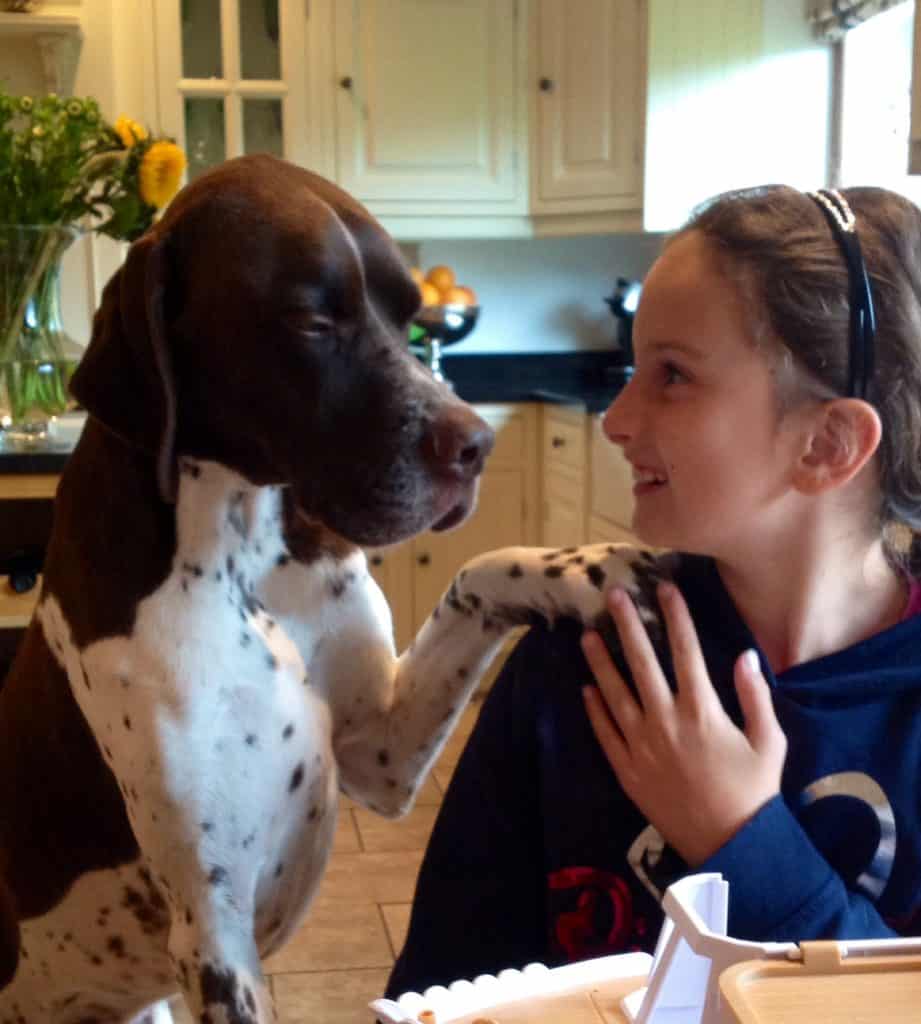
These dogs are generally good with people and also children.
These dogs have an appetite for playing and can get busy with kids when you are busy with your work.
Pointers are generally not reserved when it comes to playing with unfamiliar kids as well.
Anyone who can keep the dog busy can expect affection from it.
Dogs:
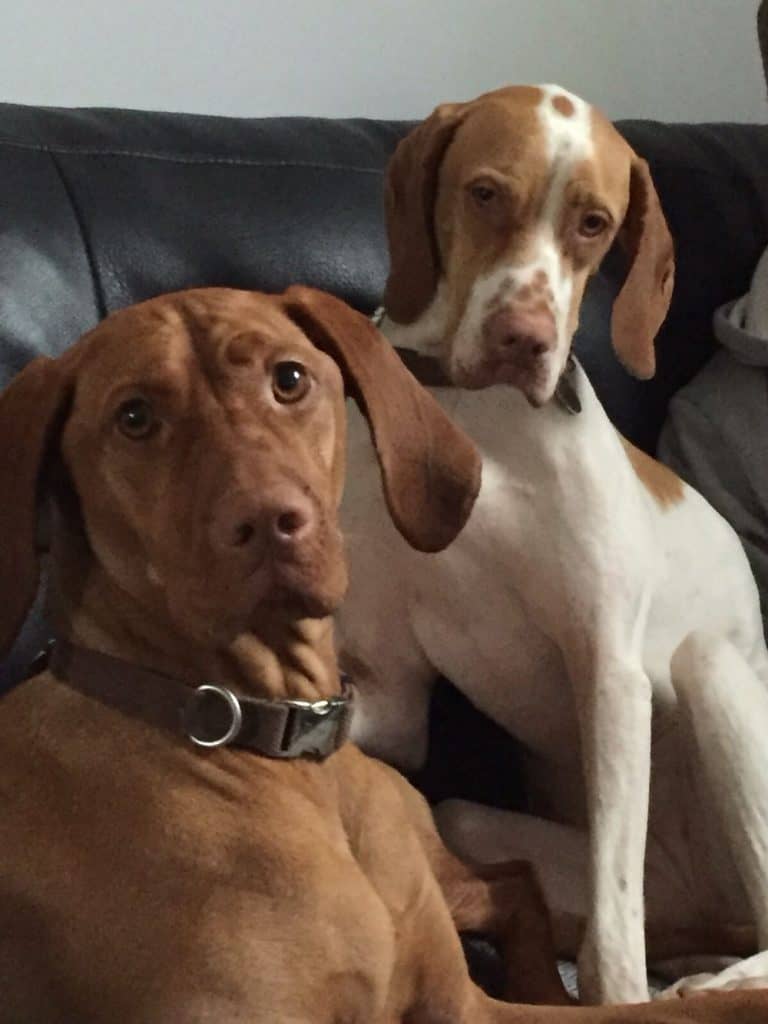
Pointers are pretty friendly towards other dogs and don’t take long in getting along with them.
They can also be energetic and very playful towards them.
If you find a pointer taking time in getting along with a dog that means it wasn’t raised properly and wasn’t given the right social environment.
Cats:
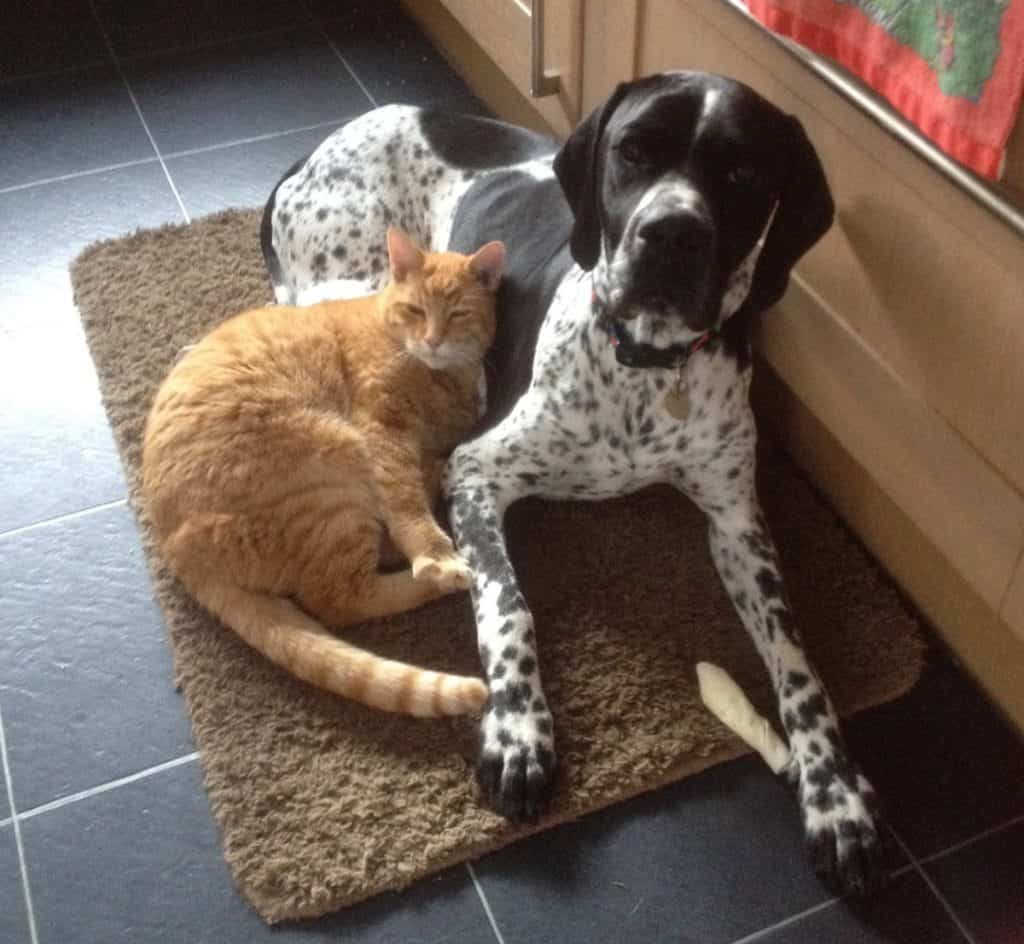
Yes, they blend well with cats as due to their good and friendly nature.
It can be seen running behind outside cats but that is mostly out of curiosity and instincts.
The only animals that need looking after from the dangers of this dog are the house birds.
FACT-ILICIOUS: “The history of the Pointer can be traced through various works of art. From dogs identifiable as early Pointers on the walls of 3,000-year-old Egyptian tombs to French and English paintings from the 17th through 19th centuries to 19th-century bronze figures, the evolution of the breed is brought to life.”
Overview
The English Pointer is a medium-sized, energetic and loving dog that is not suited for an inexperienced family or handler.
It gets well with mostly all and should be given a good socializing space so that it doesn’t grow aloof.
It can handle hot weather better than cold weather due to its short coat and low-fat content.
It has an infinitesimal level of energy and is active throughout the day, so it needs a family that can keep it busy in activities.
It is even-tempered and barks only when needed or when it feels uneasy about something.
It has minimal requirements of grooming but sheds little by little throughout the year and so should be groomed regularly to keep both house and the dog clean.
It is a breed that was developed in England in the 1700s after being brought from Spain.
It came to America along with the colonists.
Pointers need a house to live in instead of apartments as they have a need for more space.
All in all, it is a great breed to live with if you have an energetic family with a lot of enthusiasm for spending time outdoors in your yard or a park and are looking for a loving and good-tempered dog.
What are your thoughts on the pointer?
Place a comment and let us know.



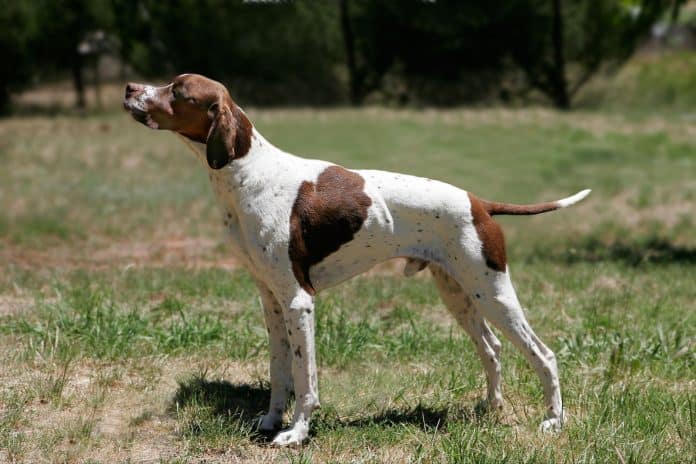









[…] Pointer […]